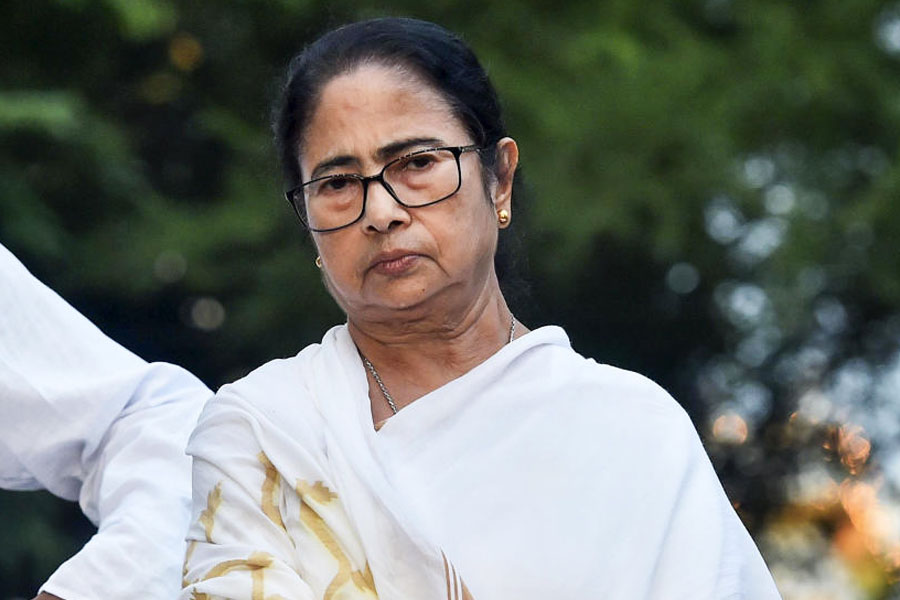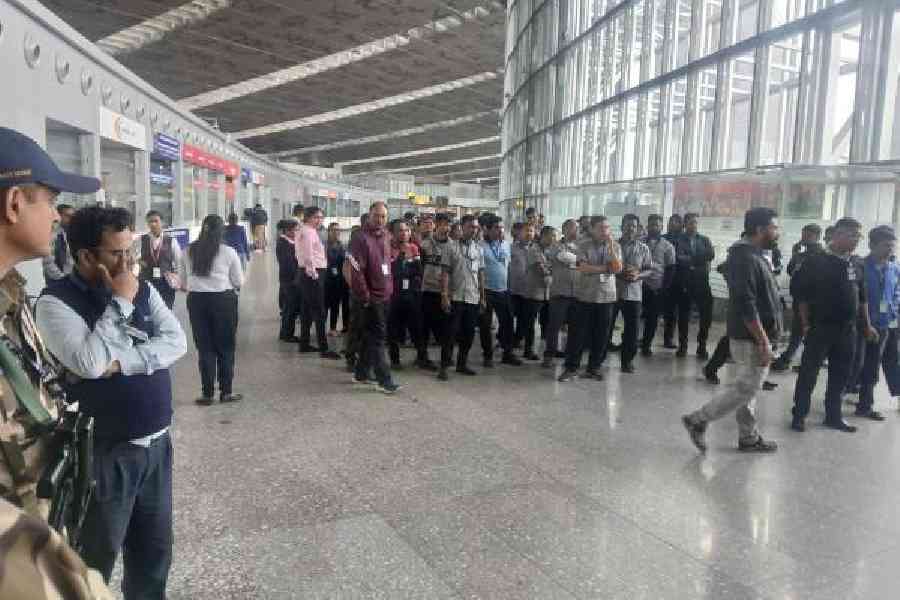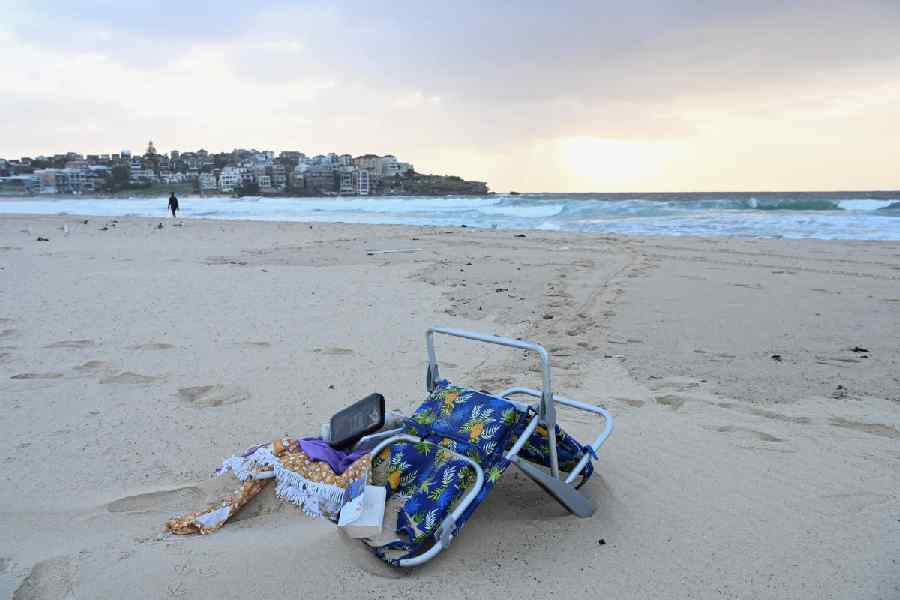 |
Aishwarya Rai Bachchan seldom fails to surprise. So when the actor delivered a baby last month, she raised quite a few eyebrows. And one of the reasons people were taken aback was the fact that despite being in her thirties, she had a normal delivery — a phenomenon that is becoming increasingly rare among urban Indians.
And its not always because they are — as the saying goes — too posh to push. Often, they are not given a choice. Take Sangeeta Chakrabarti, a 30-year-old lecturer in Calcutta, who was nudged into having a planned Caesarean section (CS) when she gave birth to her child earlier this year. I didnt have any health complication. But right from day one, my gynaecologist started organising my Caesarean operation — which hospital I should go to, the delivery date and what the cost could be, says Chakrabarti, who describes the doctors directions as gentle and systematic brainwashing.
Chakrabartis complaint is an oft-heard tale, but CS deliveries are increasingly on the rise in India. The World Health Organization (WHO), in its latest report on CS deliveries in nine Asian countries, reveals that the current Indian CS rate is 17.8 per cent of all deliveries, higher than its recommended average of 15 per cent.
In any population, the C-section should not be more than 5-15 per cent of the total number of deliveries. But in many Indian states, it is much more than the accepted rate, says K.S. James, head of the population research centre at the Bangalore-based Institute for Social and Economic Change (ISEC).
Doctors are meant to advise a C-section in special cases. A Caesarean section should be done only when there is a medical indication to improve the outcome for the mother or the baby, the WHO says.
But increasingly, it is being recommended on dubious grounds. Women across India often complain they were persuaded to go for C-sections even though they felt they could deliver normally, says Neha Madhiwala, health activist and co-ordinator, Centre for Studies in Ethics and Rights, Mumbai.
What not many would-be parents know is that a C-section can lead to serious complications. Chakrabarti, for instance, was not informed about the risks involved, which included haemorrhage and lingering abdominal pain. At the end of the day, C-section is abnormal — we make an incision into the abdomen to get the baby out, says Dr Subhas C. Biswas, professor, gynaecology and obstetrics department, SSKM Hospital, Calcutta. So like any surgery, this procedure can lead to medical complications, including an adverse reaction to anaesthesia. Other risks include hernia and embolus formation (a blood clot in the vein).
There are long-term effects too. The risk of a mother requiring hysterectomy is 10 times greater after CS than in a vaginal delivery. The risk of mortality goes up several times when compared to vaginal delivery, says an Indian Journal of Medical Research study (2006). For babies, a C-section could result in increased incidence of allergies and asthma in childhood and adult life and possible neurological disorders, experts say.
 |
Would-be mothers in West Bengal have more reason to be worried. The state has the highest CS rate in private facilities among all the states, as revealed by a study conducted by ISEC, based on government data. Bengal has a 50.3 per cent rate, followed by Himachal Pradesh with 43.9 per cent and Andhra Pradesh with 42.8 per cent.
The overall CS rate in Bengal rose from 3.3 per cent in 1992-93 to around 19 per cent in 2009-10. The authorities say the private sector is where the CS rate is rising more alarmingly.
The CS rate in the private sector can be higher than 40 per cent while in public hospitals it is around 12 per cent on an average, says Dr J. Chaki, joint director, health and family welfare department, West Bengal.
So what has caused this steep rise? Health activists believe that C-section deliveries are on the rise because they are convenient for the doctor — and lucrative for the hospital.
The increase in Caesarean deliveries in urban areas may be attributed to factors such as better socio-economic conditions in cities and may also be insisted on by medical professionals for monetary gains, says Sanjay K. Mohanty, associate professor with the Mumbai-based International Institute for Population Sciences (IIPS), a nodal agency appointed by the Indian ministry to carry out family health surveys.
That its an urban phenomenon becomes clear when you look at the figures within Bengal. Calcutta has the highest CS rate of 33.5 per cent, points out Sancheeta Ghosh, who was the lead author of the ISEC study. The more rural Malda, on the other hand, had a 2.2 per cent CS rate. Profits and pressures of private practice may be motivating doctors to perform more surgical deliveries, she says.
In fact, normal deliveries have become so rare that some top private hospitals in Calcutta do not have labour rooms. They do most deliveries in their OTs (operation theatres), says Dr Subhabrata Ghosh, a gynaecologist in Calcutta.
CS deliveries are also more expensive. An IIPS study shows the average cost of a Caesarean delivery is higher than that of normal delivery in both private and public hospitals. Based on data from the District Level Household Survey carried out by the central ministry of health and family welfare, the study shows that the average cost of a normal delivery was Rs 4,431 in private health centres, compared to Rs 11,595 for a C-section (in 2004-08) in the private sector, says Mohanty.
The difference in costs varies from hospital to hospital and city to city. In private hospitals in Bangalore, a Caesarean section operation costs Rs 50,000-60,000 while a normal delivery costs Rs 40,000-50,000.
In the top private hospitals, the costs are considerably higher. Calcutta scientist Dipankar Saha got a rude shock when he received his bill after his wife delivered a child through a C-section. Initially, we were told that the C-section package would cost Rs 60,000-80,000, but the final bill came to around Rs 2 lakh, he says.
Doctors and administrators, however, reject the argument that they push for CS deliveries. Our reputation relies on word of mouth. So if it is said that doctors in our hospital are forcing women to undergo C-section, wed be affected, says Probir Bose, director-in-charge, Woodlands Hospital, Calcutta, where the CS rate has hovered around 90 per cent over the past three years.
Most of our patients choose C-section themselves, adds Bose. Kishore Kumar, head of Cloud Nine, a high-end maternity hospital in Bangalore, believes that CS births are on the rise because of increasing medical conditions in women such as gestational-induced diabetes and hypertension as well as babies that are bigger than what a pelvis can normally accommodate.
Infrastructural shortcomings, doctors hold, are another reason why CS is on the rise. A severe dearth of trained medical personnel — anaesthetists, midwives, nurses and paediatricians — forces them to opt for CS deliveries.
If five women have labour in a room, ideally we need five sets of trained personnel to attend to them, explains Dr Gautam Khastagir, consultant gynaecologist and obstetrician associated with Belle Vue Clinic, Calcutta. We hardly have an adequate number of personnel in our hospitals to handle such pressure.
Moreover, normal delivery is unpredictable and can take up to 15-16 hours, he points out. I might be attending to some medical emergency when my patient experiences labour. I will find it difficult to handle both cases simultaneously. Obviously, C-section is the solution in such cases, he says.
Its also true that doctors are overworked (India has one doctor for 1,700 patients, versus 170 in Cuba and 220 in Belgium).
Most doctors work in several hospitals these days. Frankly, we do not get the time to prepare for normal deliveries, which are time consuming, says Dr Ghosh.
Gynaecologist and sexologist Padmini Prasad, director, Institute of Sexual Medicine, Bangalore, adds that these days, both doctors and patients prefer to play safe. Even if there is a small chance of a problem in a normal delivery, doctors and patients opt for a Caesarean operation, she says, adding that doctors recommend natural deliveries only in the most ideal cases.
Consultant gynaecologist and obstetrician Dr Sudip Chakravarti puts the debate in perspective. CS rates are rising partly because of doctors, partly because of patients and maybe hospitals are playing a role too, says Dr Chakravarti, whos on the advisory board of a leading Calcutta private maternity nursing home, where the CS rate is 75 per cent.
That patients often themselves opt for CS births was revealed in a study carried out by Dr Sukumar Barik, consultant gynaecologist and obstetrician with Westbank Hospital, a tertiary private health care facility in Howrah. Even after detailed discussion about the risks involved in C-section and normal deliveries, 45 per cent of the C-section cases chose a Caesarean on their own,says Dr Barik.
The main reasons for the request could have been fear of the pain associated with vaginal delivery and uncertainty about the delivery time. Many urban women suffer from tocophobia, or the fear of childbirth. They go into labour but give up after a few hours, says gynaecologist Vidyamani Lingegowda, who runs the Lalbagh Nursing Home in Bangalore. This is because they know that there is an easier and quicker option of operation available to them.
Another reason urban women have been opting for CS deliveries is that many are marrying late and giving late births. Ater 30, it is difficult to deliver a child normally, says Dr Lingegowda.
However, activists feel that before putting the onus on women, it should be ascertained whether pregnant women are properly counselled by their doctors about the merits and demerits of normal and Caesarean deliveries. Chances are theres hardly any counselling available in hospitals, says Divya Deswal, Delhi-based childbirth educator associated with Birth India, an NGO that supports natural birth.
Some experts say doctors are also opting for CS births to avoid medico-legal cases. Patients are filing cases under the Consumer Protection Act on the flimsiest of grounds, says Dr R.D. Dubey, president, Calcutta chapter of the Indian Medical Association. Kamini Rao, director, Bangalore Assisted Conception Centre, adds that there have been cases where women patients who underwent long labour blamed their doctor for improper treatment. So doctors have become cautious and Caesarean operations have become a defensive practice for them, she says.
But often there are very good reasons for CS births too. Indias maternal mortality rate (death of mothers during or after pregnancy) declined by 17 per cent (from 2004 to 2009). It is often argued that the safer CS deliveries are a reason for the decline. Even a couple of decades ago, mothers died during normal deliveries and there were numerous complications for the child as well. So C-section is a boon because it reduces chances of such losses during childbirth, says Dr Mitrasree Dasgupta, gynaecologist at Aurobindo Seva Kendra hospital in Calcutta.
Indira Devi, president, Obstetrics and Gynaecology Society of Hyderabad, says that in the last two decades, the medical parameters under which patients are advised Caesarean operation have changed. With advanced technology, doctors can find out even if there is a small margin of error in going for a normal delivery. This has led to an increase in Caesarean cases, she says. She gives the example of the cardio topography machine. This machine can point out even a 15 per cent chance of a normal delivery going wrong, she explains.
Nevertheless, there is a section of doctors who advocate normal deliveries if theres no medical indication for a C-section. In Delhi, Dr Manju Hotchandani, consultant, Mothers Nest, Moolchand Womens Hospital, says doctors try their best to convince even patients asking for a CS delivery to go for a normal delivery. After all, its accepted internationally that vaginal birth is a safer form of delivery, stresses Dr Chakravarti.










